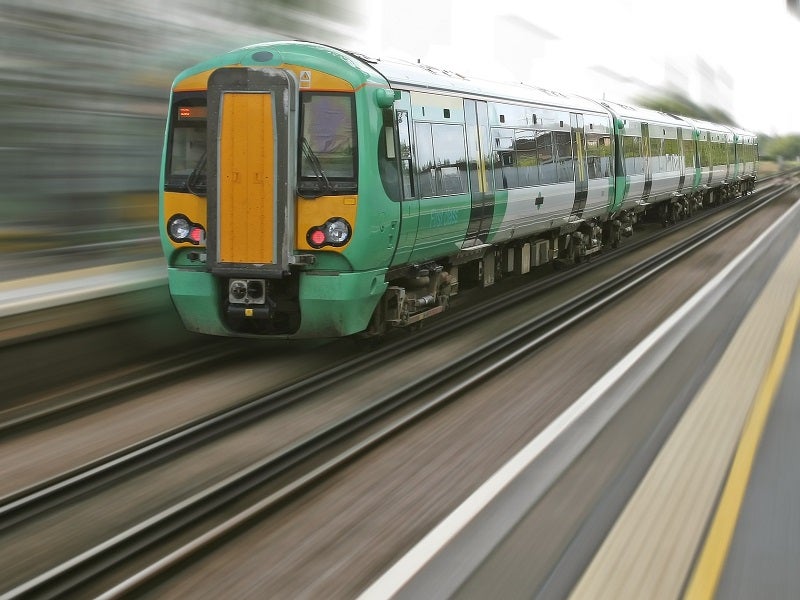
Speaking in February at the annual George Bradshaw address, in front of a packed house of rail engineers, Keith Williams was unequivocal in his assessment of the industry’s poor track record in modernisation.
The rail industry “no longer possesses the same ability or incentive to innovate,” said Williams, who was appointed by the government in September to lead a “root-and-branch” review into the UK’s network’s shortcomings.
In light of Williams’ pronouncement – which came as little surprise to many – the recently formed partnership between Network Rail and Innovate UK, the government agency tasked with supporting new technologies to boost the economy, should be wholly embraced.
In November, the two bodies launched a competition asking entrants to come up with solutions related to automated rail infrastructure design. In particular, the competition was focused on new technologies based around track layout overhead line electrification, signalling and traction power supply systems.
The competition is funded as part of Network Rail’s Whole Systems Modelling programme, with the overarching aim of helping the group purchase new automated design tools within the next two to five years.
A step in the right direction for Network Rail
In recent years, automated design has gained traction as an attractive means of helping engineers expand their design capabilities, while driving down costs. While often derided as an overly bureaucratic and indecisive organisation, Network Rail – which owns and runs the UK’s railway infrastructure – has, in this instance, put a step in the right direction.
How well do you really know your competitors?
Access the most comprehensive Company Profiles on the market, powered by GlobalData. Save hours of research. Gain competitive edge.

Thank you!
Your download email will arrive shortly
Not ready to buy yet? Download a free sample
We are confident about the unique quality of our Company Profiles. However, we want you to make the most beneficial decision for your business, so we offer a free sample that you can download by submitting the below form
By GlobalDataIn fact, Network Rail has little choice but to innovate as it looks to meet expanding capacity demands. Passenger numbers on UK rail services are forecast to double in the next 25 years. In that period, rail franchises will be expected to undergo infrastructure changes that will require more sophisticated design methods.
There is great potential for savings to be made, too. According to the Office of Rail and Road, design costs hit £3.4bn in 2016/17. The utilisation of computers for mechanical design – especially generative design – could lead to improved performance across the industry.
In their brief, competition entrants were told to consider the UK railway as “a system of systems” spanning power and control methods, pedestrian flow and train services. These exist within a number of complex track systems and substructures, including earthworks, bridges and tunnels.
It is hoped that generative design tools could offer improved long-term predictions of railway performance, reducing franchising risks while also attracting more private sector investment. Network Rail also believes the move to automated infrastructure design could lead to safer, higher capacity operations with lower overheads.
Of the above, participants were asked to address two specific capability needs in their project proposals; they had to be able to predict future railway service capability in the long term, and “to assist in the preparation of design options to save time and optimise designs by better balancing complex interacting factors”.
Victors: the four winning entries at a glance
And now the winning entries have been announced, with the four victors all sharing a slice of a £300,000 grant that will go towards their projects.
Construction and engineering firm Costain Limited was selected for its Rail: Automated Infrastructure Design – R:AID project; a toolkit which, according to the group’s rails sector director Ian Parker, will involve “a data-centric infrastructure design process that will improve the efficiency of rail systems in a safe and transparent way”.
Midlands-based aerospace engineering outfit Graffica Limited was chosen for its infrastructure design and evaluation framework project, which is set to look into how existing tools can be integrated to use data coming from specialist railway tools and other third-party sources.
PEAN Technologies Limited, which classes itself as an ‘ICT systems integrator’ on its website, has been tasked with developing a toolkit to generate and automatically adjust track layouts so as to be clash-free. Elsewhere, Plume Rail Limited will look to develop a solution around automated traction power simulation and design.
Free to last anywhere between six months and one year, projects must finish by 31 March 2020, with total costs falling between £50,000 and £200,000. According to Network Rail and Innovate UK, successful solutions “could have applications in wider infrastructure and urban planning applications”.
Uncharted territory: potential gains from automation
While automated design is being tipped as a gamechanger in the future construction and maintenance of the UK rail industry, the notion of automation, in its broadest sense, still represents uncharted waters for the industry.
As Network Rail’s own Michael Carey, the group’s head of ergonomics, told delegates at November’s European Rail Human and Organisational Factors Seminar, there are a set of “human factors challenges” concerning automation in railway control.
“The biggest risk lies in mixing together unreliable and opaque automation with unsustainable expectations on the staff that operate it,” said Carey.
But if Network Rail plays its cards right, automated design could facilitate improved delivery of projects on Britain’s railways – leading to better services for both passengers and operators.
With Williams’ findings and recommendations due to be published later this year – and consequent reforms set for 2020 – these new projects couldn’t have come at a better time.






